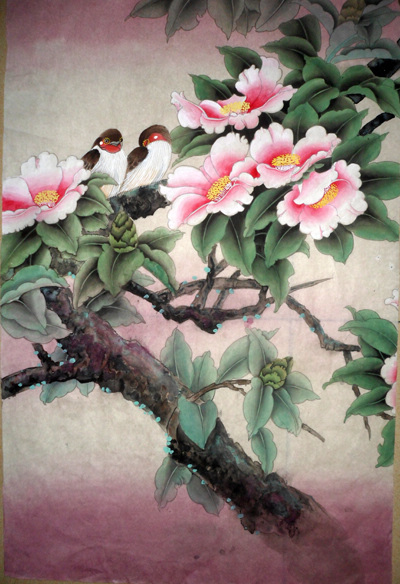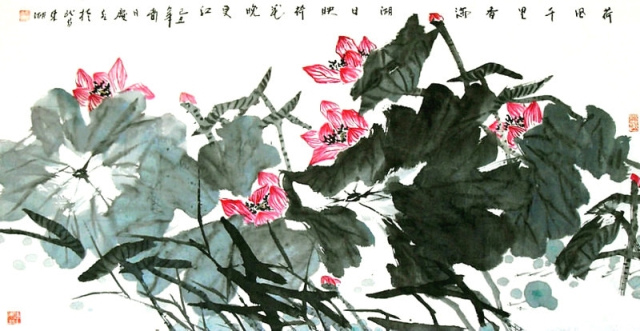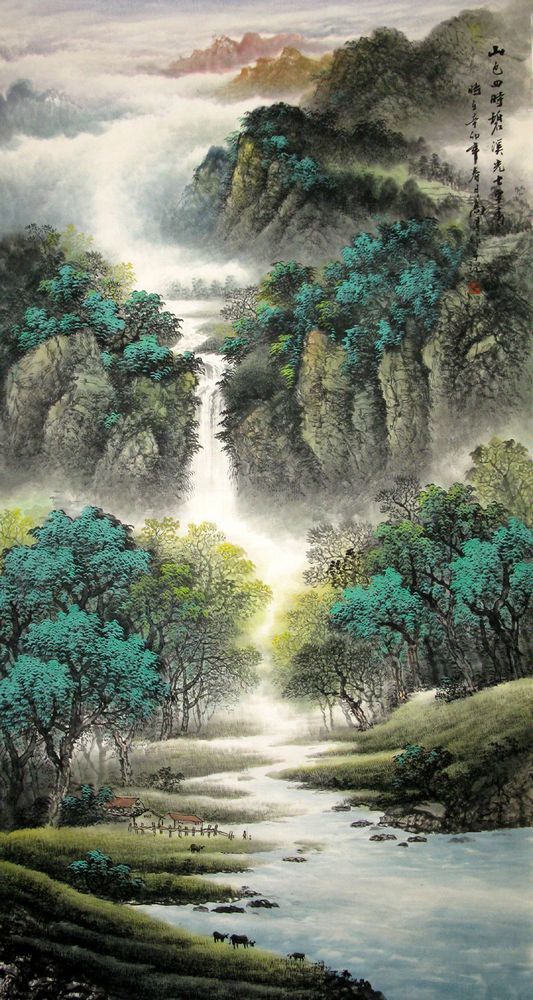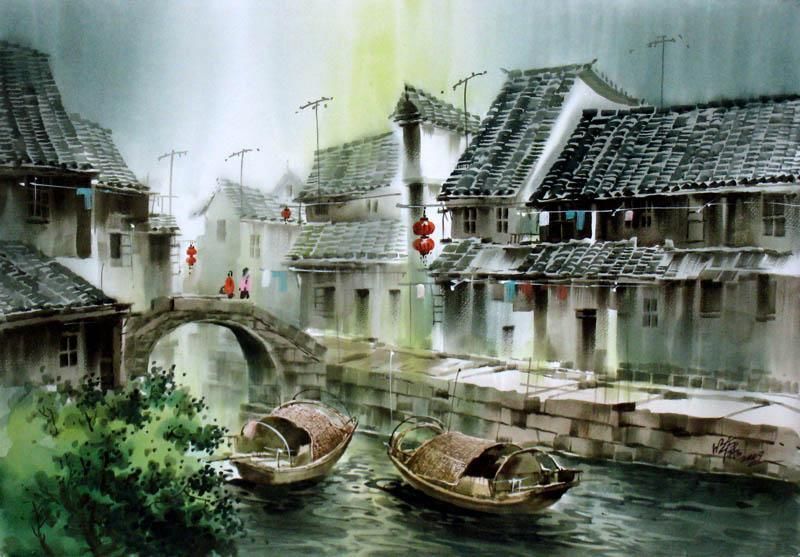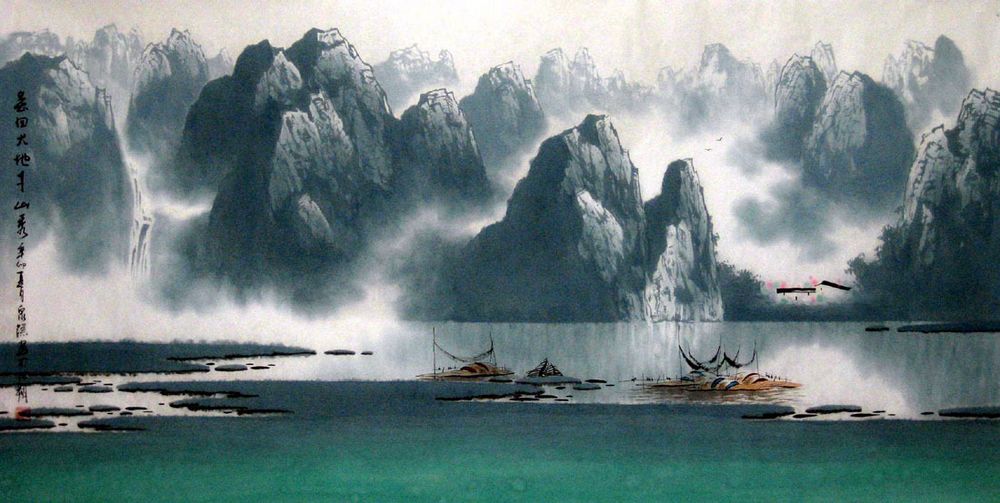Chinese Painting Modes of Expression (One)
After knowing some basic knowledge about Chinese painting, you should know some professional terms about Chinese painting in skills and techniques. Now, ready go.
One: Xieyi: free and spontaneous, primarily in ink, sometimes with light color tints, favored by scholar painters. The xieyi drawing group is marked by exaggerated forms and freehand brush work. Xieyi, however, is the fundamental approach to Chinese Painting. It constitutes an aesthetic theory which, above all, emphasized the sentiments of the authers. Even in ancient times, Chinese artists were unwilling to be restrained by reality. A famous artist Of the Jin Dynasty, Gu Kaizhi was the first to put forward the theory of "making the form into the spirit." In his opinion, a painting should serve as a means to convey not only the appearance of an object, but expressing how the artist looks at it. Gu's views were followed by theories such as "likeness in spirit resides in unlikeness" and "a painting should be something between likeness and unlikeness". Guided by these theories, Chinese artists disregard the limitations of proportion, perspective, and light.
Two: Gongbi
A careful, precise style with meticulous attention to details, forms, and standards, usually associated with works in color. Shading can be achieved through light ink washes or application of color. Color is applied not to create a naturalistic image, but rather in a symbolic fashion. The image is not a meditative tool or expression of Qi, but rather a portrayal of beauty as seen by the painter. This painting style was most commonly limited to professional painters and eventually largely gave way to Xieyi painting.
Three: Boneless: painting without outline in colors or ink but directly shape the object by dotting and dyeing with color. Sometimes different colors or shades of ink are loaded on to the same brush, enabling the artist to achieve various effects with just one stroke. This technique is usually used on flower paintings and its use in a landscape gives another-worldly quality to the scene.


